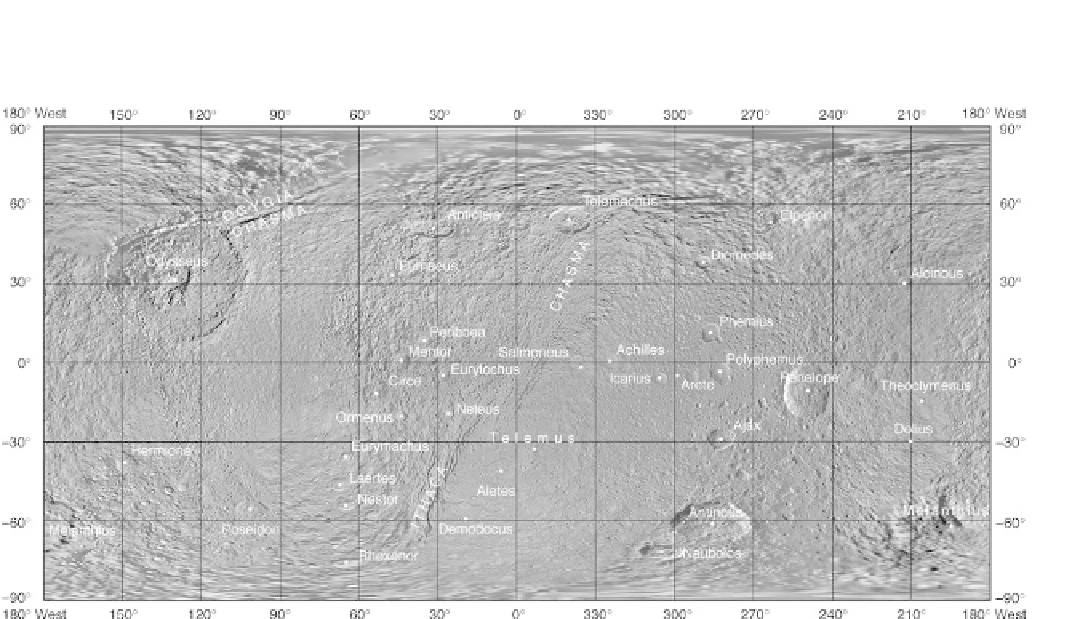Geology Reference
In-Depth Information
Figure 9.26. A mosaic of Voyager and Cassini images for Tethys, showing key place names (from Roatsch et al.,
2009
).
Figure 9.27. An oblique view of Odysseus crater. This 445 km impact
structure has a central peak complex and a rugged
oor. The shallow
depth of Odysseus suggests viscous relaxation of the rim (NASA
PIA07693).
ring-like central peak complex (
Fig. 9.27
). Its low relief
may have resulted from viscous
flow of the icy litho-
sphere. The impact that formed Odysseus could have
occurred when Tethys was partly liquid and the ice in its
interior was soft and plastic. Although most of the larger
impact craters, such as Telemachus and Melanthius, have
distinctive central peaks, others lack this structure.
Ithaca Chasma is a branching canyon system nearly
2,000 km long, 100 km wide, and ~4 km deep (
Fig. 9.28
)
with wall terraces that were probably formed by enormous
Figure 9.28. A shaded relief map of Tethys prepared from Voyager
images centered on the sub-Saturn hemisphere at 0° longitude,
showing Ithaca Chasma (courtesy of the US Geological Survey,
Flagstaff).
landslides. The canyon system is roughly antipodal to
Odysseus and may have been created as some sort of
crustal response to the impact. Alternatively, the canyon
might have formed in response to interior expansion as




